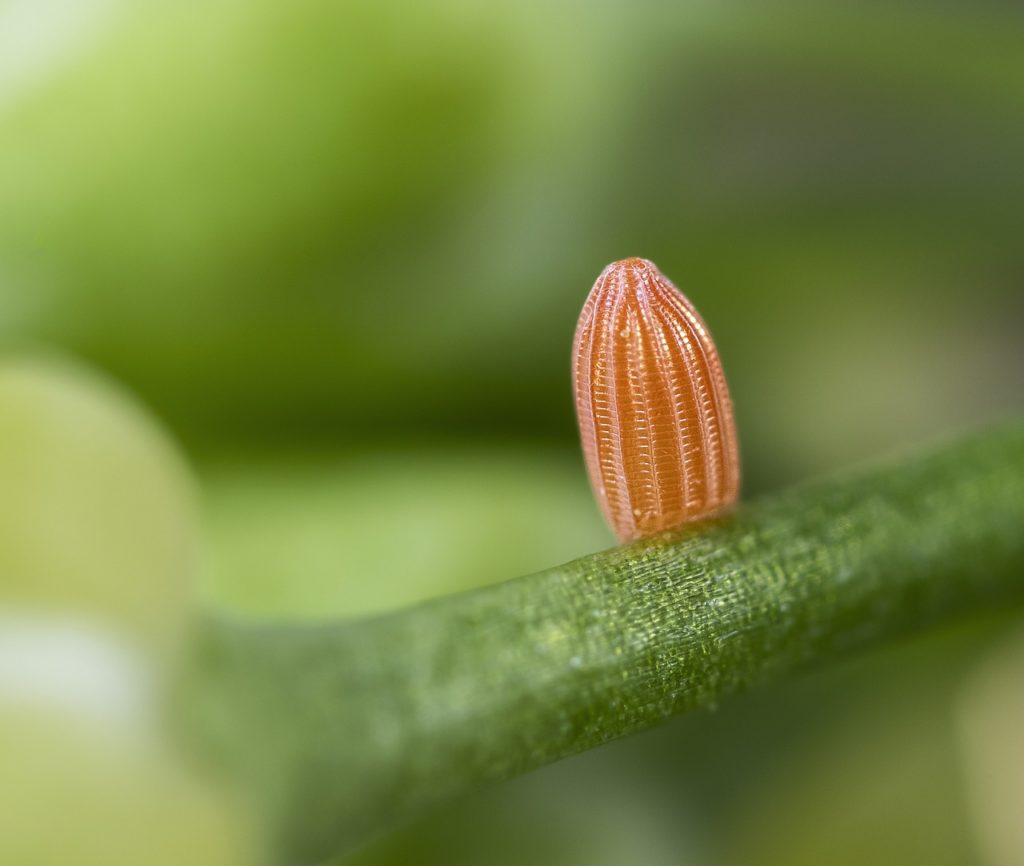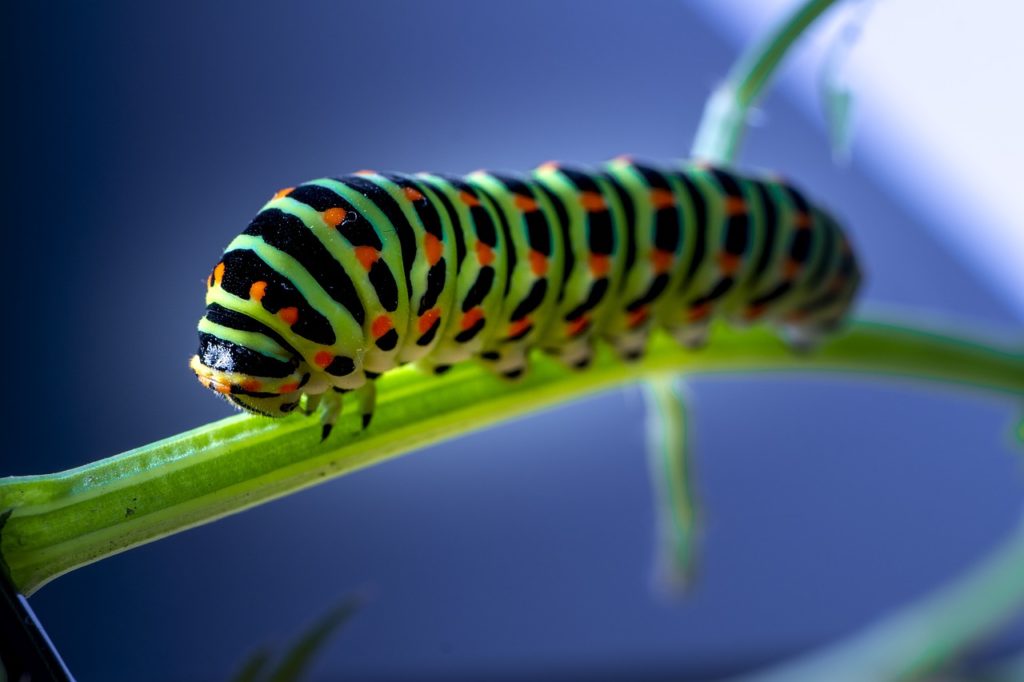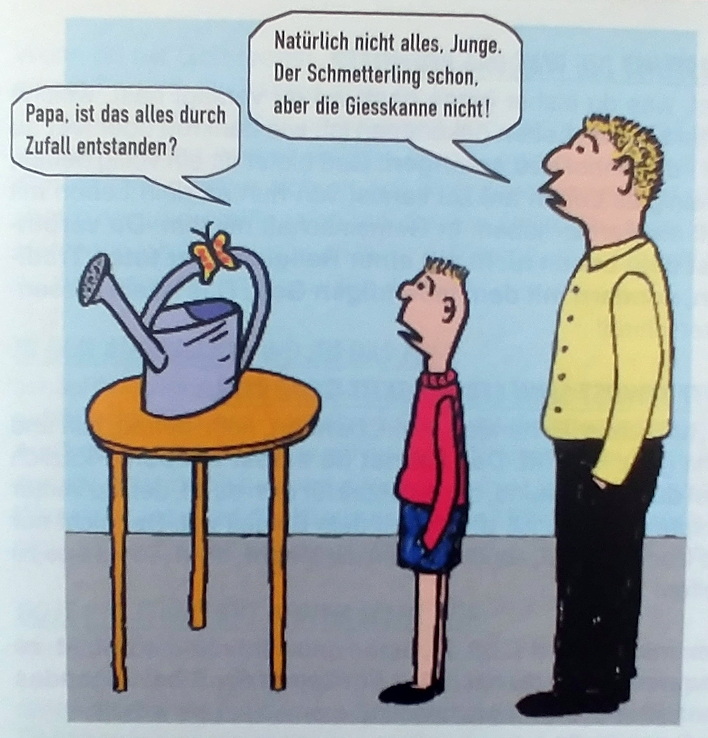The development of a butterfly from a tiny egg through the caterpillar and pupa to the butterfly is the most fascinating indication of creation that I know. This transformation – called metamorphosis – is a miracle that cannot be explained by evolution. Two brilliantly built organisms share the same genome.
Look at the development of a butterfly in detail:
The egg

The egg of a butterfly has a symmetrical structure like a work of art. This is a beautiful prelude to the wonderful events that follow. The female butterfly attaches the eggs with a sticky liquid to a very specific plant that serves as the caterpillar’s only food source. Finding the right plant and laying the eggs exactly there is not so easy, but the butterfly is doing his job very well. The eggs are lined with a layer of wax to keep them moist and viable.
The caterpillar

Caterpillars are eating machines, eating their own weight in leaves every day. To do this, they have a digestive tract that runs almost the entire length of their body. The caterpillar increases its weight 3000 times during its growth phase. In this process, it has to shed its skin over 400 times, because the outermost layer of skin fits like a diving suit and is waterproof so that the caterpillar does not dehydrate. Because this layer of skin keeps getting too tight, it makes new skin inside and sheds the old one when it no longer fits.
The future as a butterfly is already laid out in the caterpillar. For this purpose, it has two types of cells: Larval cells (containing the information of the caterpillar) and Imaginal cells (containing the information of the butterfly). Thus, there are two different blueprints laid out in the caterpillar. The imaginal cells serve as precursors for the later butterfly and are positioned in the right place in the caterpillar’s body in the form of discs.
The pupa
In the pupa, most of the caterpillar’s tissue disappears and transforms into new structures that were not even rudimentary before. For example, you won’t find any of the butterfly’s compound eyes in the caterpillar, nor its proboscis, long joints, or legs. All these structures are newly built. The old tissue of the caterpillar (the larval cells) is systematically disassembled and digested, and the cells dissolve. Thus, the components of the caterpillar are transformed into a kind of soup from which the adult organism of the butterfly is built.
The cell death of the larval cells is thus already planned and programmed in the caterpillar, while the imaginal cells are preserved for the future butterfly and reproduction. In this process, the result (the finished butterfly) must be fixed from the beginning and programmed in the caterpillar).
The transformation begins
On the first day, the caterpillar’s digestive tract is still intact. On the 10th day, this is completely rebuilt and has only ¼ of its original volume – ideal for the nectar-eating butterfly.
During this transformation, the butterfly’s reproductive organs are formed, which are completely absent in the caterpillar!
Read that last sentence again. Do you know what it means? The caterpillar cannot simply remain a caterpillar. It must necessarily transform into a butterfly in order to reproduce. This means that the transformation had to work from the very first pair of caterpillars, a male and a female of the same species. And this is the case for 2000 butterfly species. There is no room for gradual development here. Other things happen:
- The butterfly’s tubular heart is reshaped to fit in the butterfly’s abdomen.
- The very simple eyes of the caterpillar, which could only distinguish between light and dark, are replaced by complex visual organs, the compound eyes.
- After hatching, the long proboscis must be assembled from two halves like two half straws.
- The muscle system that enables the butterfly to fly is assembled. In the process, the caterpillar uses both imaginal cells and recyclable larval cells to assemble the new muscle system.
- Six legs and two antennae are individually formed and compactly pressed against the wall of the pupa.
- Four wings are artfully shaped, decorated, and refined with veins and scale nets. They are still soft and pliable at first and are hardened after hatching.
All this happens in 10 days. A scientist who studied butterflies for decades said:
It’s a big orchestra, and there’s a conductor, a guiding force that’s responsible for all these incredible processes. I’ve never seen anything more overwhelming
Out of the film “Metamorphosis”
Here you can buy the film “Metamorphosis”: Amazon
Questions for evolutionists to think about

- How should the blueprint for two quite different shapes (with the pupa actually three) in a single organism have arisen in evolutionary steps through random change and selection?
- How can selection allow the emergence of a pupal stage if the finished butterfly is not already in view?
Evolution explains the development of species, including the butterfly, in this way:
Biological evolution = This is understood as the gradual change, from generation to generation, of the heritable characteristics of a population of living beings and of other organic structures (e.g. viruses)
Source: Wikipedia, article “Evolution” in German, downloaded March 13, 2021
I am convinced that this does not explain the development of the caterpillar into a butterfly. It is quite obviously an “all-or-nothing project” which had to work the first time and which is perfectly programmed. In addition, it is also beautiful. It is therefore a proof of creation and shows that the creator is ingenious and has a sense of beauty.
This is the second part of my series on creation and evolution, you can find the first part here: https://www.andis-notizen.de/creation-and-evolution-01
Bildquellen
- Butterfly-Egg: Picture of GLady auf Pixabay
- Butterfly-caterpillar: Bild von Hans-Peter Scholz auf Pixabay
- Schmetterling-Giesskanne: Werner Harke
- Schmetterling-02: Bild von David Mark auf Pixabay

